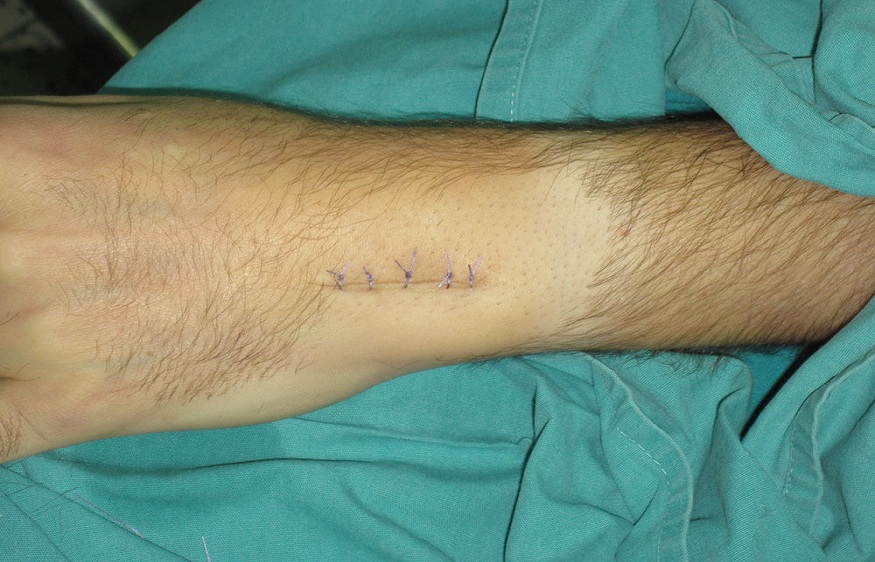Foot cyst surgery is used in situations where this swelling persists, becomes painful and limits movement. This surgical procedure helps to slow the increase in the volume of the cysts and reduce the risk of recurrence.
However, since cysts are usually painless, other treatments are usually used to get rid of them.
What are cysts?
Cysts can appear on the feet or on any joint of the body. They are abnormal, non-contagious and usually benign growths filled with fluid. Sometimes they are congenital.
In podiatry, we generally encounter 2 types of cysts on the feet:
Synovial cyst : It occurs when the joint capsule of the metatarsals (foot bones) tears, allowing the synovial fluid it contains to flow out. This flow subsequently causes a cyst, which is sometimes painful. This type of cyst generally forms slowly and progressively and it is not uncommon for it to reappear after several months.
Epidermoid cyst (or epidermal inclusion cyst) : As its name suggests, this cyst forms in the epidermis (the top layer of skin) of the foot. Smoother, this skin growth usually occurs due to trauma or a blocked skin pore.
Some superficial cysts on the foot can be operated on directly in the clinic. This is particularly the case fo the toe region since the skin is thin and the cysts are easily accessible.
Who are the people at risk?
Cysts on the feet manifest themselves in many ways and can affect anyone, regardless of age or habits.
Although generally benign and painless, people who notice significant or painful swelling that interferes with daily life should quickly consult a podiatrist.
It should be noted that people with diabetes or poor foot hygiene may be at greater risk than others.
Patient Expectations After Foot Cyst Surgery
The podiatrist must absolutely prepare the patient for the procedure that awaits him. It is important to explain the procedure, as well as the different methods that will be used.
The patient must rely on a foot professional who will be able to treat the cyst painlessly and effectively. The podiatrist must also take the time necessary to answer questions properly.
When should foot cyst surgery be chosen?
Generally, surgery for foot cysts is reserved for very specific cases, where the cyst is painful or does not resolve with conservative treatments such as puncture and cortisone. In addition, if the cyst interferes with walking or causes a feeling of swelling, surgery may be necessary.
Take the time to do your research to check out your podiatrist’s background. Pay close attention to their level of experience and the various mentions they have received.
Adapt your treatment plan to your situation
The podiatrist must be able to consider your needs and health history in his treatment plan. In specific cases, he must also be able to perform complex procedures.
Empathy, respect and professionalism are important assets for a podiatrist. The latter must build a solid bond of trust with you and be able to explain all the steps of your treatment. In addition, this professional must be there for you and be able to treat you quickly if necessary.
Patient history is very important
By asking targeted questions about your medical history, the podiatrist can determine why a cyst has appeared on your foot. Your history will also help him or her assess whether your case is urgent and whether surgery is necessary or not.
The clinical examination
Necessary for any podiatric treatment, the clinical examination allows the podiatrist to assess whether you are a candidate for surgery or if other treatments are preferable to eliminate the cysts.
In this portion of the examination, the podiatrist assesses:
Conservative treatments
Foot cyst surgery is used in exceptional cases, as a last resort. Other conservative treatments can be used to relieve you:

